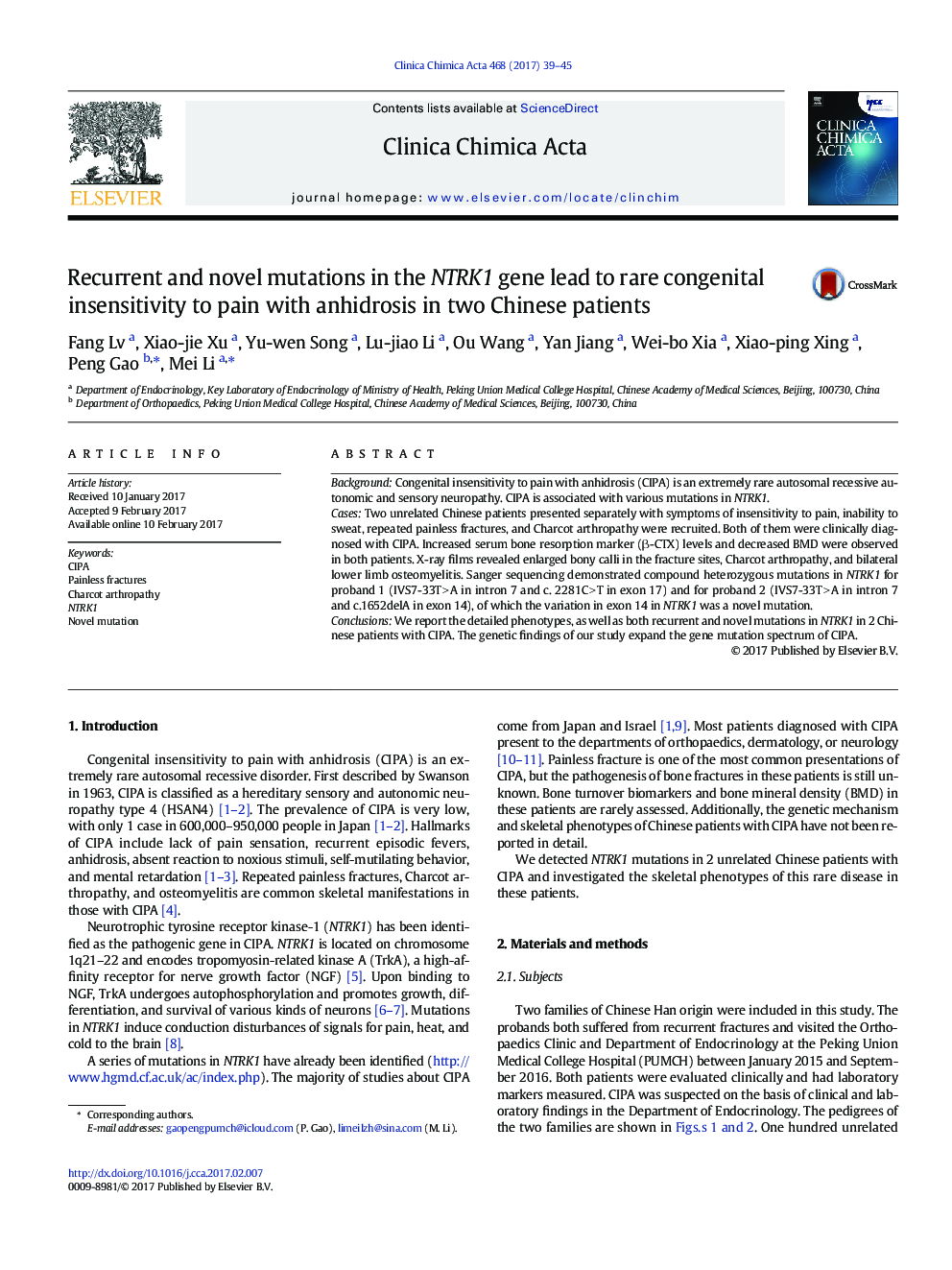| Article ID | Journal | Published Year | Pages | File Type |
|---|---|---|---|---|
| 5509894 | Clinica Chimica Acta | 2017 | 7 Pages |
â¢We report two rare cases of CIPA of Chinese origin caused by recurrent and novel mutations in the NTRK1 gene.â¢We reviewed the possible mechanisms of bone lesions induced by NTRK1 gene mutations.â¢Genetic analysis is useful to determine molecular diagnosis of CIPA.
BackgroundCongenital insensitivity to pain with anhidrosis (CIPA) is an extremely rare autosomal recessive autonomic and sensory neuropathy. CIPA is associated with various mutations in NTRK1.CasesTwo unrelated Chinese patients presented separately with symptoms of insensitivity to pain, inability to sweat, repeated painless fractures, and Charcot arthropathy were recruited. Both of them were clinically diagnosed with CIPA. Increased serum bone resorption marker (β-CTX) levels and decreased BMD were observed in both patients. X-ray films revealed enlarged bony calli in the fracture sites, Charcot arthropathy, and bilateral lower limb osteomyelitis. Sanger sequencing demonstrated compound heterozygous mutations in NTRK1 for proband 1 (IVS7-33T > A in intron 7 and c. 2281C > T in exon 17) and for proband 2 (IVS7-33T > A in intron 7 and c.1652delA in exon 14), of which the variation in exon 14 in NTRK1 was a novel mutation.ConclusionsWe report the detailed phenotypes, as well as both recurrent and novel mutations in NTRK1 in 2 Chinese patients with CIPA. The genetic findings of our study expand the gene mutation spectrum of CIPA.
